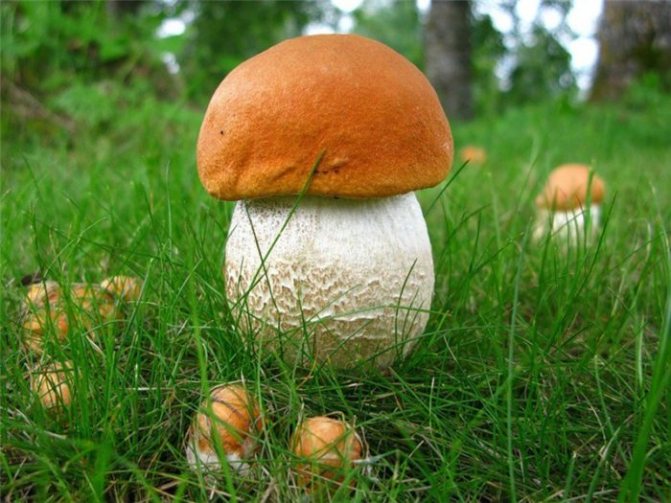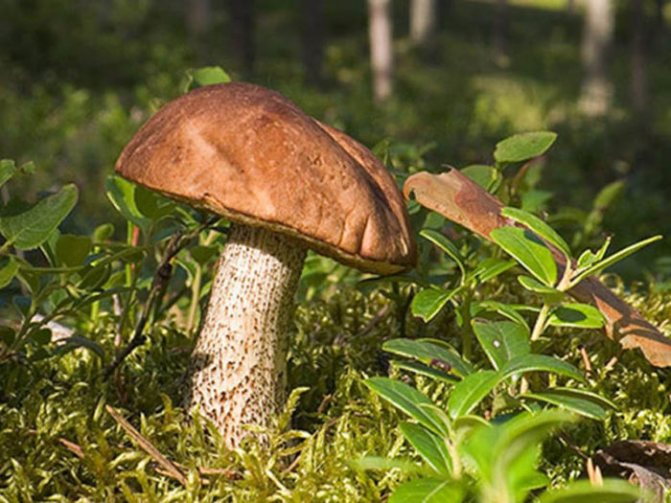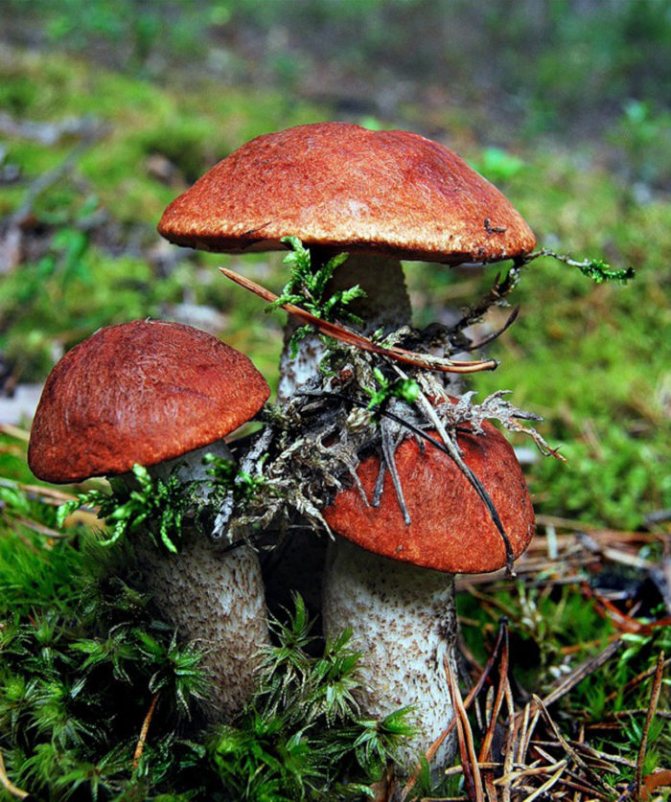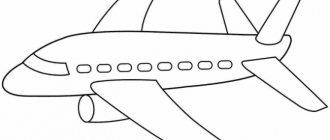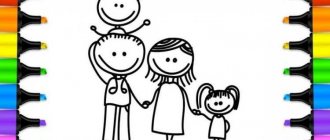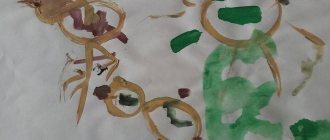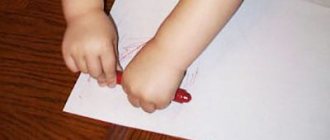Notes on non-traditional drawing "On a mushroom meadow" in the junior group
Lyudmila Pasikova
Notes on non-traditional drawing "On a mushroom meadow" in the junior group
Drawing foam rubber printing using a stencil
"In the mushroom meadow "
Program content: Teach children to depict mushrooms using a stencil using the “printing”
foam stick.
Practice drawing vertical short straight lines with your finger from top to bottom to depict grass. Develop a sense of color and rhythm. Cultivate curiosity and interest in drawing .
Materials, tools, equipment: illustration depicting mushrooms , stencils of mushrooms , sample teacher, foam sticks, sheets of A-4 paper, gouache, napkins.
The teacher shows an illustration of mushrooms and reads a poem:
We'll go into the woods, we 'll find a fungus ,
Small, okay, in a smart hat. (O. Vysotskaya)
Don't hide, mushroom in the grass ,
I'll rip you off anyway!
Examines parts of the mushroom , specifies color and size.
Then he turns his attention to the sheets of stencils. “You have mushrooms living in your clearing . But where are they? They hide behind the windows. Let's find them together? I dip the stick into the white paint and tap it on the “window”
.
Like this. Knock-Knock! Try it yourself.” Children accompany their movements with the words: “Knock-knock-knock
.
The teacher helps fill out the entire lower part of the window. mushrooms lack ? Now let’s fill the upper part of the “window”
. At the end of the work, the stencils are removed. The teacher reads a poem:
Look, mushrooms have appeared !
Brown cap, solid belly
You see, this is dad, it’s easy to recognize him.
We tried our best and found mushrooms in a green meadow .
Games
Different pictures of mushrooms for children allow you to conduct many different kinds of speech therapy games. Here are some examples:
- Collecting mushrooms
Each player chooses one picture of a mushroom and tries to describe its external features. If the other player guesses right, the card goes to him. The one who collects the most pictures wins.
- How are we similar?
An adult chooses two cards (boletus-boletus, white-boletus, russula-fly agaric) and invites the children to see as many differences between them as possible. The last one to answer wins.
- Cheerful cooks
Invite the children to “cook” a lunch of different edible mushrooms that they know. Everyone must choose one picture and name a dish that can be prepared with one or another mushroom (for example: porcini mushroom soup, pickled boletus, boletus mushrooms in sour cream, salted milk mushrooms, etc.
- Oh, what a honey fungus we have!
The image of any mushroom is transmitted from one player to another. Everyone names one of its characteristics, distinctive features of the external structure. The winner is the participant who can see and name some detail last.
- Tales from storytellers
Ask each player to choose one specially selected picture of a mushroom for children. Then everyone must come up with a short story about their character. Tell about his character, habits, activities. For example, Borovik is the king of all mushrooms in the forest, he is strict and important, busy with government affairs from morning to evening, loves to play football and play the balalaika. Older preschoolers can be asked to come up (in a circle) with a whole story about the mushroom kingdom; everyone can draw illustrations for the fairy tale together.
- Mosaic: find a piece
Make cut-out pictures from the cards and invite your child to assemble them. You can use drawings of poisonous and edible mushrooms for this game.
- Full basket
Invite your child to select several cards (he will need a small basket for this), memorize them well and repeat all the names by heart without looking into the basket again. Each player can try to become a mushroom picker by collecting their own set of cards.
On the topic: methodological developments, presentations and notes
Target. Teach the technique of smearing, i.e. pressing on the rolled ball with your index finger and pulling it up to obtain an image of grass; continue to teach yourself how to pinch off small ones.
Educational areas: cognition, communication, physical development. Goal: to consolidate and expand children’s ideas about spring, to cultivate a caring attitude towards nature; development of fine motor skills of the hands, development of...
Summary of a finger painting lesson in the first junior group Topic: “Let's decorate the Christmas tree” Types of children's activities: playful, communicative, cognitive-research, productive.
Summary of a finger painting lesson in the first junior group “Beautiful cup with polka dots” Irina Shishkina Summary of a finger painting lesson in the first junior group “Beautiful cup.
a lesson on sensory development on the topic “magic meadow”.
Learn to draw in unconventional ways - with your fingers.
Source
An example of a drawing lesson summary for a senior group on the topic “Mushrooms”
HE. Mishchuk “Drawing lesson on the theme “Amanita in the grass”
When a child draws, he transfers his pure soul to paper.
| Organizational educational activities | ||
| Kind of activity | Topic/Materials | Objectives/Program content |
| Drawing | "Mushrooms" Materials . Red, green and simple pencils, eraser, sketchbook sheets for drawing. | Learn to draw a fly agaric from its constituent parts (leg with skirt, cap). Clarify children's understanding of the structure of mushrooms: common and distinctive features. To develop an interest in learning about the world around us, to introduce them to edible and poisonous foods. |
| Lesson stage | GCD content | |
| Preliminary work | Look at pictures of mushrooms, talk about edible and poisonous ones, name them. Consider the peculiarity of the appearance of the fly agaric (bright red cap with white dots, skirt on a leg). | |
| Main part | Conversation on the topic The teacher tells the children that old man Lesovichok came to visit them today (brings in a doll and a basket of dummies). Lesovichok talks about the forest school “Pantry of Knowledge”, where animals study. And tomorrow they will come to class, and Lesovichok will tell them about mushrooms. He found many different mushrooms in the forest, but he did not find a very bright and beautiful mushroom, but very poisonous. The teacher invites the children to help Lesovich and draw fly agarics so that he can take their drawings to the forest school and tell them to the animals. The teacher invites the children to talk about mushrooms and show Lesovich that they also know a lot about them (shows pictures of mushrooms and asks questions about what they are called, what color the caps of boletus, boletus, boletus, and fly agaric are). He makes riddles about the fly agaric so that Lesovichok will also make them at his school. This mushroom grows in the forest. Don't put it in your mouth! It is not at all sweet, specks on the cap, red like a tomato, inedible... ( fly agaric). How good he is! He has a polka dot hat! This fungus grows in the forest, but I won’t bring it home! He is too quick to kill, Poisonous mushroom... ( fly agaric). The teacher asks a question about why you can’t collect fly agaric mushrooms. The teacher tells the children that now they will draw a fly agaric, but first they will play a game to remember all the types again. Game “Edible - Inedible” Explanation of the drawing scheme. | |
| Physical education minute | Gymnastics “Into the forest to pick mushrooms” All the little animals are at the edge of the forest (children walk in a circle, holding hands) They are looking for milk mushrooms and milk mushrooms. The squirrels were jumping, (the children are jumping) The squirrels were plucking. (pluck them) The fox ran, the foxes collected. (children run in a circle and collect them) The little bunnies jumped around and looked for honey mushrooms. (children jump, collect honey mushrooms) A bear passed, (children walk like a bear waddle) A fly agaric crushed. (children stomp their right foot) | |
| Final part (summarizing) | Let's tell Lesovich once again which ones can be collected and which ones cannot. What are their names? The teacher prepares a large sheet of whatman paper in advance, tinting it with a light green color, drawing bushes and grass as if in a forest clearing. Children lay out their drawings in the clearing, look at them, choose the best ones and give them to Lesovich. | |
Step-by-step drawing of a fly agaric
The teacher should pay special attention to explaining all the stages of drawing a fly agaric.
Step by step drawing | 1. Using a simple pencil, draw a vertical line in the center of the sheet, marking the edges of the cap and skirt on the leg. 2. Let's draw a leg that looks like a tree trunk, expanding at the bottom. The top of the cap has an arched shape, the bottom is a line with slightly raised edges. 3. Draw a skirt on the fly agaric leg on a pre-marked line, and circles on the cap. We erase the extra lines. 4. Color the hat with a red pencil, leaving the circles white. You can draw a wavy line at the bottom of the cap and shade it with vertical shading. Using a green pencil, draw the grass in which the fly agaric grows. |
The teacher shows pictures depicting edible mushrooms. Children name them and describe their appearance features.
Photo gallery: pictures of edible mushrooms to show to children
|
The teacher shows pictures of poisonous mushrooms. Children name them and describe their appearance features.
Application with drawing elements “Mushroom clearing” in the second junior group
Liliya Nasretdinova (Fatiykhova)
Application with drawing elements “Mushroom clearing” in the second junior group
Author : Liliya Nasikhovna Fatykhova, teacher of the first qualification category of MADOU No. 100 “Firebird”
city of Naberezhnye Chelny.
Goal: to develop imagination and interest in artistic creativity.
-learn to depict mushrooms using the appliqué technique : create images of contrasting sizes from ready-made elements;
— enrich children’s vocabulary and develop their speech;
— practice the technique of painting with gouache paints .
- cultivate curiosity and interest in nature;
- stimulate children's creative activity;
- cultivate independence, confidence, initiative.
— Develop communication skills, cognitive processes (mental operations, arbitrariness and concentration, memory capacity and others).
— Maintain children’s interest in the discipline being studied.
— Develop a sense of color, shape, size and composition.
Materials, tools, equipment.
Sheets of white paper for composing the composition, ready-made forms for gluing mushrooms - rectangular or oval legs and round or semicircular caps (2 sets of elements each, contrasting in size, glue, 2 brushes, gouache paints, cups (jars)
with water, paper and cloth napkins, oilcloths.
Puzzles
It is very useful to teach riddles on a chosen topic with children. This helps not only to train the preschooler’s memory and attention, but also significantly increases his vocabulary, and also allows him to automate difficult sounds. Here is a selection of suitable riddles called Basket of Mushrooms for Kids:
